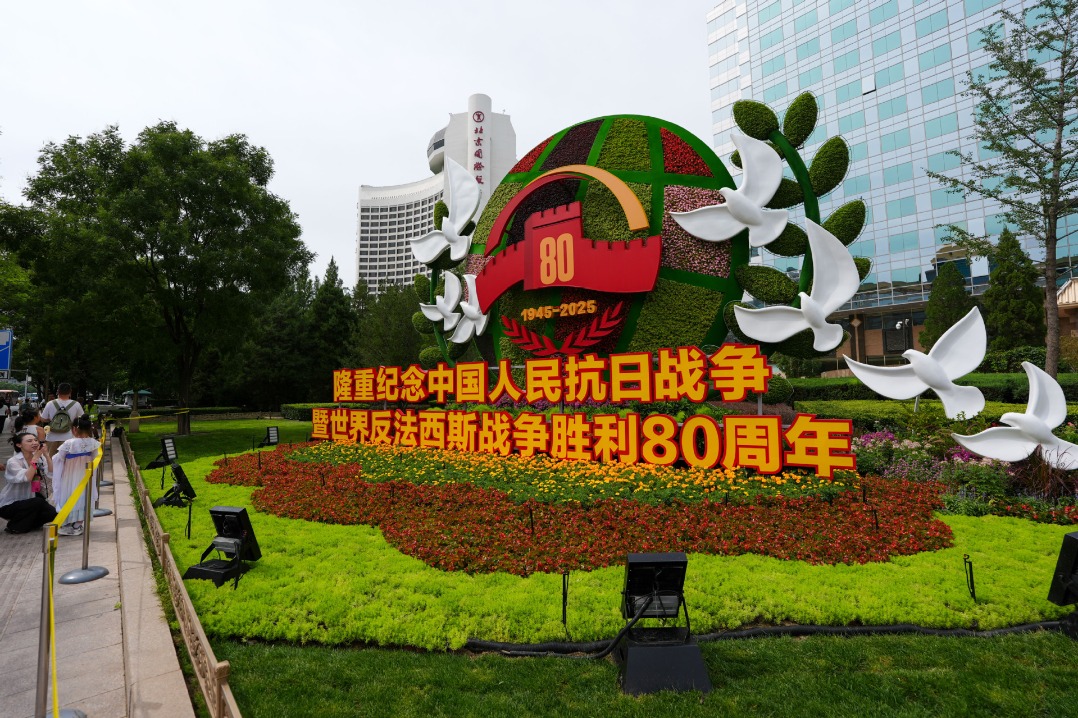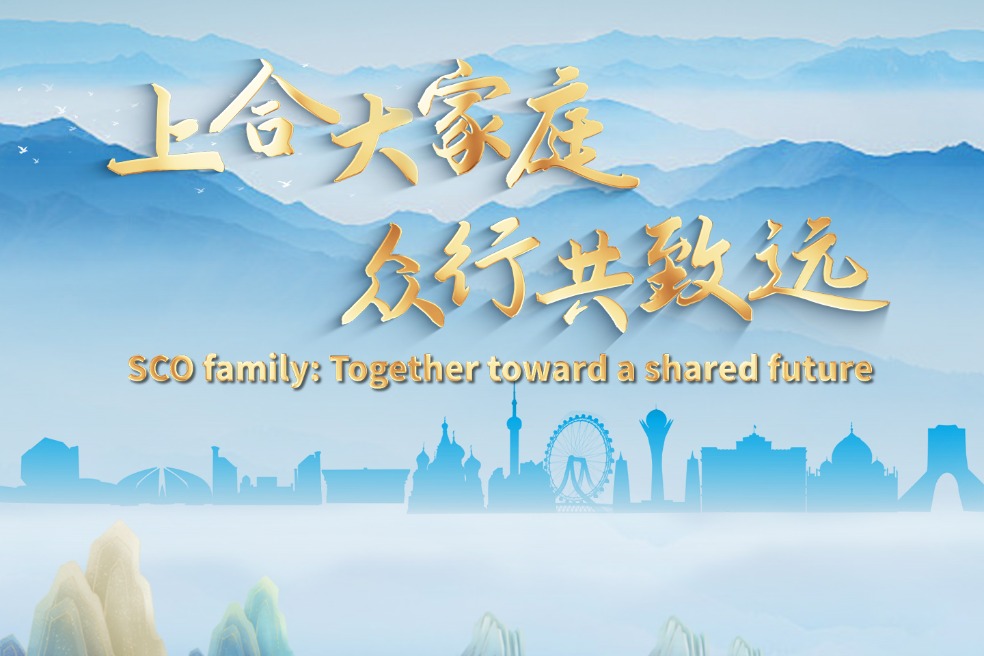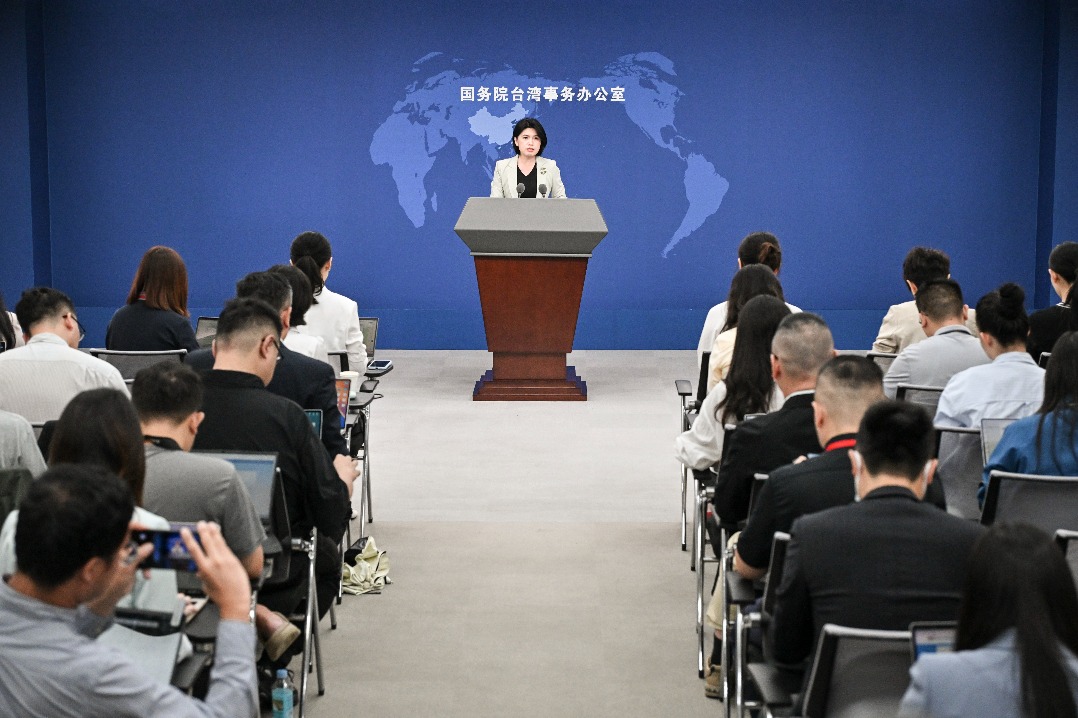The heart of Spring Festival: Heritage, harmony and hope
From colorful lantern shows to ancient ancestral worship, Chinese New Year unfolds a rich tapestry of cultural practices and joyous celebrations. Cheng Si reports.


Spring Festival marks the beginning of the new year in China, which falls on the first day of the first month of the Chinese calendar. Chinese people organize a variety of social practices and celebrations to welcome the new year, expressing blessings and prayers for good fortune, wealth and family reunion.
New year pictures and couplets
The festive vibes of Spring Festival can be found in richly colored decorations wishing for good fortune such as new year pictures and spring couplets. Spring couplets are red paper strips with black or golden Chinese characters written on them and are usually hung on doorways.
New year pictures, nianhua in Chinese, usually come in the form of colored woodblock prints. They are used to ward off evil spirits during Spring Festival and are hung on doors or walls.
The history of new year pictures dates back to Northern Song Dynasty (960-1127) and Ming Dynasty (1368-1644). The painting style of the pictures varies from different areas in China, with the main themes being heroes, immortals, auspicious symbols, natural landscapes, babies, beauties, myths, legends and historical events.
Some well-known production sites for these pictures include Yangliuqing in Tianjin, Yangjiabu in Weifang, Shandong province, and Mianzhu in Sichuan province.
Rituals and ancestor worship
People of certain family clans usually organize ancestor worship activities during Spring Festival. They wear traditional Chinese clothing to worship their ancestors following ceremonial rituals at ancestral temples, and pray for family harmony, a good harvest and prosperity.
Ethnic groups' celebration of Spring Festival
The Mongolian ethnic group in Qian Gorlos Mongolian autonomous county in the northeastern province of Jilin blends Spring Festival celebration practices of the Han people with their own ethnic traditions.
They call their celebration Spring Festival of Tsagaan Sar, or white moon, in their dialect. They prepare a feast with milk tea, mutton soup, dumplings and round pancakes on Chinese New Year's Eve and visit family members when the new year comes.
Lantern Festival and lantern shows
Lantern Festival falls on the 15th day of the first month of the Chinese calendar during the full moon, and is part of Spring Festival celebrations. It's a tradition for people to eat tangyuan or yuanxiao — glutinous rice balls — on the day. People leave the house carrying lanterns at night, visiting lantern shows and solving riddles.
The lantern shows have a history dating back to the Han Dynasty (206 BC-AD 220), and flourished in the Tang (618-907) and Song (960-1279) dynasties.
China has several lantern shows of great note in Shanghai's Huangpu district, Nanjing's Qinhuai district and Zigong in the southwestern province of Sichuan for their splendid and magnificent lantern designs.
Shehuo and folk performances
Shehuo, literally translated as "earth and fire" or "community fire", originated from people's worship of the god of Earth and the god of fire. Celebrations and performances are organized, mainly in the countryside, to worship the god of Earth and god of fire during Spring Festival to pray for a good harvest, warmth and the ability to cook.
Many other festive folk performances are also staged during Spring Festival, from the first day to the 15th day of the first month of the Chinese calendar, such as dragon and lion dances, to express people's happiness. Dragon and lion dances differ in shape and form based on local customs, and the most well-known dragon dance is fire dragon dance in Tongliang district, Chongqing, and in Pujiang county in Zhejiang province, which emerged during the Ming (1368-1644) and Qing (1644-1911) dynasties.
Temple fairs and flower fairs
Days before Spring Festival falls, people purchase flowers, kumquats or persimmons from flower fairs to decorate their homes.
During Spring Festival, people gather at temple fairs, or miaohui in Chinese, to engage in celebration activities including religious ceremonies, entertainment, performances, games and shopping.
Beijing has one of China's most famous temple fairs — Changdian temple fair -which has a history traced back to the Ming Dynasty (1368-1644).
Wenxi flower-shaped buns
Flower-shaped buns, or huamo, from Wenxi county in North China's Shanxi province have a history of about 1,000 years, predominantly seen as emerging around the Ming (1368-1644) and Qing (1644-1911) dynasties.
The multilayered bun resembles blooming flowers from afar. The buns are made at major events including festival celebrations, weddings or new births.
Representatives
Inheritors play an important role in preserving the nation's cultural heritage together with dedicated associations and institutes devoted to protecting folk customs.
? Huo Qingshun — 73, inheritor of Yangliuqing new year woodblock prints in Tianjin
? Dong Qiaolan — inheritor of Wenxi flower-shaped bun-making skills in Shanxi province
? Yinglian Society of China — a social organization founded in 1984 to promote couplets culture
? Gu Yeliang — 63, inheritor of lantern-making skills in Nanjing, Jiangsu province
? Yang Fengshan — inheritor of Taolinping shehuo performance in Hebei province
Contact the writer at chengsi@chinadaily.com.cn

























